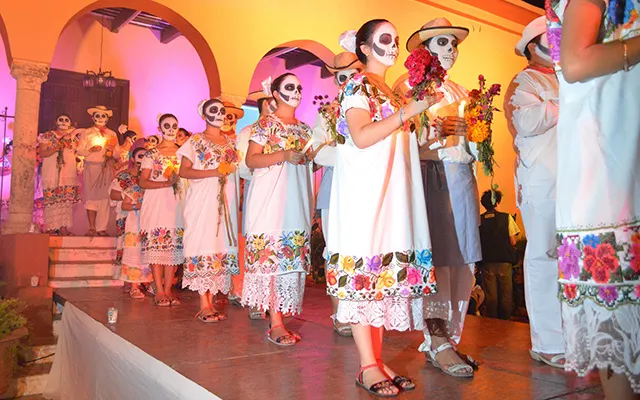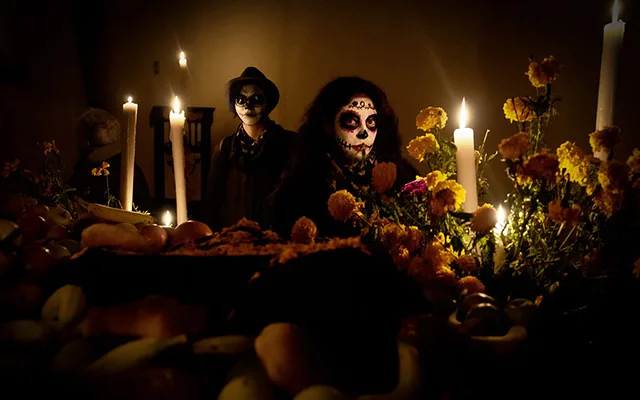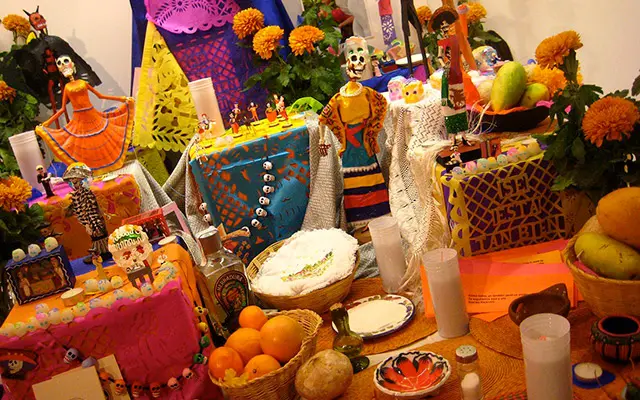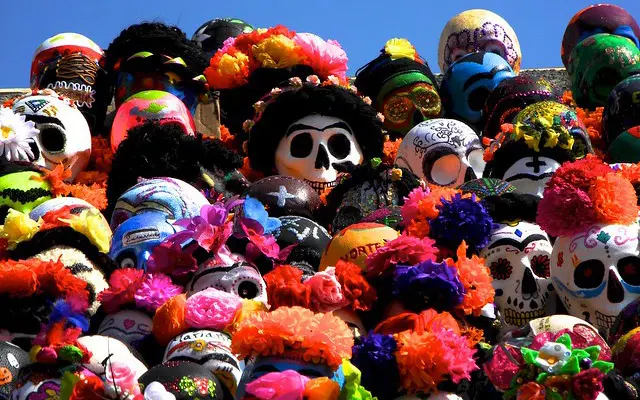What is the Day of the Dead (Dia de Muertos)?
Discover the origins of the festival that is an identical part of Mexican culture and celebrates dead as a part of the life cycle.
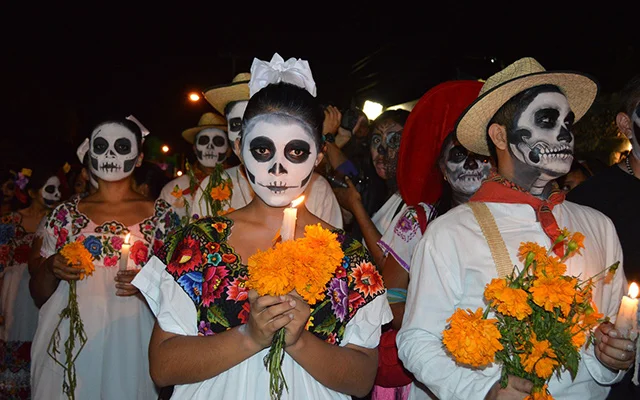
Origins, symbolisation and contemporary feast
The Day of the Dead is a public holiday in Mexico that includes a three-day celebration starting annually on the 31st of October and culminating on the 2nd of November with the Day of the Dead that commemorates the adult deceased.
The middle day (1st of November) is dedicated to infants and children who have passed away and it is called as "Day of the Innocents "(Dia de los Inocentes) or Day of the Little Angels (Dia de los Angelitos).
A closer look into the historical roots, the evolution through the years and the contemporary characteristics of the Day of the Dead celebration, promises a clear picture of the fundamentals and the deeper notion of the festival.
There is no doubt that a series of different influences and incidents occurred through centuries construct a very interesting festival with religious, societal and cultural connotations.
Pagan roots
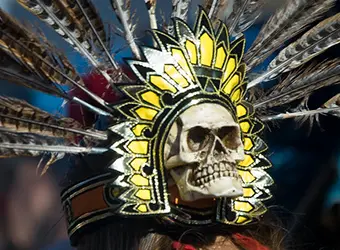
The Day of the Dead include rites and rituals that stretch back over 3000 years.
Indigenous people of the Pre-Hispanic era were used to bury their dead relatives very close to their home (at the central yard of the house). According to their beliefs, all the deceased continue to exist at a different level, thus, there was an emphasis on maintaining ties with their ancestors.
The Aztec Empire that flourished in Pre-Columbian Mexico viewed mourning as disrespectful to the dead and followed rituals honoring the spirits of the deceased.
Two successive 20-day months of the Aztec calendar were dedicated to the Goddess Mictecacihuatl known as the “Lady of the Dead” corresponding to the modern La Calavera Catrina. Those months were named Miccailhuitomi (Feast of the Little Dead Ones) and Miccailhuitl (Feast of the Adult Dead). They were forming a long culminating period celebrating the spirits of the dead and this indicated as the earliest version of the Day of the Dead.
Hispanic and Catholic influences

At the beginning of the 16th century, the Spanish conquistadors conquered the Aztec Empire.
Converting to Catholicism was one of the main objectives of colonization and together with the expansion of Christianity, the indigenous population started to adopt the concepts of Hell and Heaven in correspondence with punishment and reward.
Another influence which is responsible for the switching the Day of the Dead from a summer to an autumn feast comes with the Allhallowtide feast introduced by the Spanish missionaries. This was a dead honoring festivity adopted by the Catholic Church that was also related to ancient European pagan practices.
All Saints and All Souls Day was celebrated in Europe on the 1st and the 2nd of November, while in medieval Spain people were used to light candles for the spirits of their ancestors as well as to decorate their graves with flowers and offer wine and “spirit bread” to the deceased.
Obviously, the contemporary Day of the Dead celebration incorporates elements from both sides but due to remarkable cultural resistance of Mexicans the core of the celebration is still very close to the initial meaning and the Aztec rites.
Not Halloween
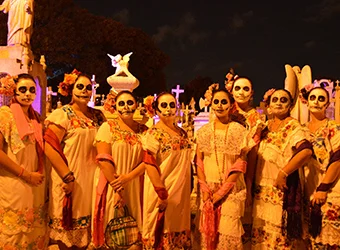
Although the Day of the Dead and Halloween are celebrated at the same time of the year as well as they have some common features since both are based to afterlife beliefs, they are not the same and actually they have major fundamental differences.
Halloween is based on Celtic pagan customs (accepted later by Christianity) where people light bonfires and wear masks and costumes in order to avoid and chase malicious and evil ghosts. Images of skeletons and skulls implicate the spooky and macabre aspect of death while people feel fear for the scary spirits that threatening the living world.
On the other hand, the Day of the Dead has its roots to the ancient Mesoamerican and Aztec beliefs where people perceive death as a part of the circle of life and refuse adopt taboos and fears about the incident itself.
It is the time of the year when the spirits of the loved ones return to the material world and celebrate a reunion with their family. The followed rituals include prayers, humorous disguises and colorful decorations orientated to the commemoration of the past positive incidents of those who are existing to another stage of life.
New era
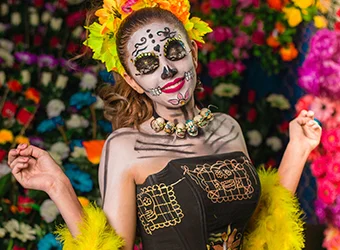
The Day of the Dead can be characterized as an identical element of Mexican culture and its celebration is prevalent across the country.
Through the centuries, the feast received external influences and evolved distinctive patterns in different regions of Mexico. From 1960 the Mexican government includes the Day of the Dead into the state’s educational policies and declared its celebration as a national holiday.
The observance of All Saints and All Souls festivities remains in the concept of the festival but the indigenous cultures and traditions are still fundamental parts of the core of the celebration.
Even outside the festivities themselves, tracks related to this tradition are observed in different aspects of everyday life. Symbols like skulls, small dolls, and others are considered as a good luck and are possessed as home decoration items.
Many Mexicans have tattoos with skulls and similar images with direct connotation to the feast, while others are used to prepare the favorite meal of the departed throughout the year as a constant honoring of the dead.

The most distinctive celebration of Mexican culture
For no-Mexicans and those who are not familiar with the festival, its name bring some melancholic and sad connotations, but instead it is a colorful feast of commemoration and honoring those who have passed away.
Not melancholic
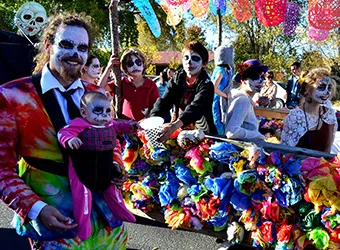
The Mexican culture observes death as a natural part of human life and treat the incident of leaving the material world with a sense or macabre humor and irony. The Day of Dead is an occasion when the spirits of the deceased return from the underworld in order to celebrate and spend one day with their families.
Such an approach is extremely challenging and perplexing for the vast majority of the existing worldwide convention but Mexicans due to their Aztec cultural roots perceive death on a totally different way which gives a particular and unique sense to the celebration.
Our dead are never dead to us, until we have forgotten them.
"Dia de Muertos" or "Dia de los Muertos"?
In some anglophone countries the name of the festival is also mentioned as "Dia de los Muertos". This is a back-translation of the original Spanish name of the festival that is "Dia de Muertos".
Some argue that "Dia de los Muertos" might sound more poetic but it is actually a bit different to the way the festival is called across the country of Mexico. Thus, the correct way to refer to the celebration is "Dia de Muertos" / Day of the Dead.
